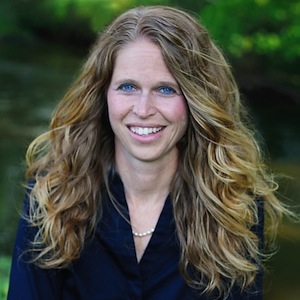Laura Kubatko, PhD 
Professor
The Ohio State University
Dept. of Statistics
Dept. of Evolution, Ecology, and Organismal Biology
Website: stat.osu.edu/~lkubatko
What inspired you to start research in computational biology?
My path to research in computational biology was not at all direct. I began my undergraduate study as a Biology major, intending to add a Chemistry major if I could manage it. My first undergraduate research experience (in a biophysics lab) made me realize that lab work was not for me, though I developed a great admiration for people who were successful at it. After returning to my undergraduate school, I decided that instead of Chemistry, I would add a major in Mathematics. The next summer, I was able to pursue a research experience in forest ecology, and I loved it! The best part of this experience for me was analyzing the data I collected, and so I decided to pursue graduate study in Statistics, with the goal of working in statistical ecology. After starting in the graduate program in Biostatistics at The Ohio State University in 1994, I met my future advisor, Professor Dennis Pearl, and learned of his research in statistical phylogenetics. I was hooked, and have worked in that area ever since.
What are 5 important skills needed for your research?
- Writing
- Logical thinking
- Curiosity
- Programming
- Persistence – probably the most important. I have accomplished a lot through trial and error and not giving up on things I thought should work!
How did you learn the computational and quantitative skills necessary for your work?
I learned the basics of computer programming at a young age. My parents were professors in a Mathematics and Computer Science Department, and our house had several different Apple computers in it at any one time. I used to complain about them, because the “buzzing” of the monitors (usually old television sets) bothered me. But I learned BASIC on these machines and wrote simple programs for fun. Probably more importantly, I learned about how computers work. In my undergraduate study, I was allowed to substitute a couple courses in Pascal for the foreign language requirement. I now program primarily in C/C++, which I learned on my own while working on my dissertation.
What important questions do you address in your research?
I am interested in developing efficient ways to estimate phylogenetic relationships from large-scale data. I find the balance between biologically-realistic models and those for which computations can be efficiently carried out an interesting area to pursue. Most recently, I’ve considered problems in which we try to integrate ideas from population genetics into a phylogenetic framework, which increases the biological realism as well as the computational complexity.
Additional thoughts...
I would encourage young researchers not to be afraid of the mathematics (or anything else!). Just work on it. It takes almost everyone several passes through a new mathematical topic to really understand it, so don’t expect to figure things out immediately. But if you work at it and ask advice when needed, that part of things can be very rewarding!
